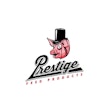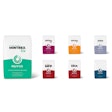
Macro and regulatory issues rank as top priorities for US feed industry trade groups
Though the novel coronavirus (COVID-19) pandemic and agriculture sector’s response dominated headlines during the first half of 2020, the leading animal feed trade associations have been hard at work advocating for policy and legislation to benefit feed producers and industry stakeholders.
This year, several macro and regulatory issues remain top priorities for the American Feed Industry Association (AFIA) and the National Grain & Feed Association (NGFA).
Here AFIA’s president and CEO Constance Cullman and NGFA’s senior vice president David Fairfield discuss these key agenda items:
Trade and the global competitiveness of the United States
U.S. feed industry trade associations continue to monitor implementation of the Unites States-Mexico-Canada Agreement (USMCA) and U.S.-China Phase One Economic and Trade Agreement, and provide timely input to the U.S Trade Representative’s Office (USTR) and U.S. Department of Agriculture (USDA) about any relevant trade issues that may arise.
“The China Phase One agreement streamlined the facility registration process that had been holding us up,” Cullman explains. “We hadn’t had a new facility approved for export to China in over nine years — so that should expedite that very quickly. Plus, the lifting of the ban on poultry and ruminant ingredient ingredients was a very, very big deal.”
U.S. feed industry representatives also urge the opening Japan’s market to U.S. agricultural products and resolution of sanitary and phytosanitary issues in the second round of U.S.-Japan trade negotiations, Fairfield notes.
They will continue to work with USTR during bilateral U.S.-U.K. trade agreement negotiations, “advising on provisions that would result in a more science- and risk-based framework for agricultural trade to counter the European Union’s precautionary principle,” Fairfield says.
Export markets will be key in the future growth of the U.S. feed industry.
“We aim to improve and enhance the competitiveness of [the U.S. feed] industry by making sure that the rules set by the international standard setting bodies [CODEX] are science based and that the agreements allow [U.S. feed industry’s] natural competitiveness to come through,” Cullman says, noting this competitiveness involves tariffs and non-tariff trade barriers. “But we also have to ensure these agreements are sound and predictable.”
New and upcoming export market identification and assessment activities are ongoing.
Mitigating and preventing the threat of foreign animal diseases
Feed industry trade associations continue to work with animal production industry stakeholders and regulatory agencies to address the potential introduction of foreign animal diseases, including the African swine fever (ASF) virus, into the United States via feed ingredients.
“We strongly advocate for a science-, risk-based approach and prudent research to address information gaps concerning the potential role feed and grain products may play in transmitting such diseases,” Fairfield says.
Human travel restrictions due to COVID-19 may have worked to also slow the spread of ASF.
“The decline in movement of people internationally may be a silver lining — if we can find one — because it may have reduced the number of vectors for [ASF] to actually come into the country,” she says.
To learn more about how COVID-19 is impacting 2020 US feed production in the June issue of Feed Strategy: https://bit.ly/378ksHk
Revamping the regulatory processes for feed ingredients, additives
Ingredient suppliers and animal feed producers often experience expensive delays and regulatory obstacles preventing them from introducing new products to the market. According to a recent study funded by the Institute for Feed Education and Research, “companies lose an average $1.75 million annually in revenue per ingredient waiting in the regulatory pipeline.”
U.S. feed industry suppliers “don’t have an avenue for ingredients with production attributes and we have not been able to make production claims for non-drug ingredients,” Cullman says. “Meanwhile, regulatory authorities throughout the world are able to approve products so that the manufacturer can make claims about the product’s impact on production without it being a drug.”
Cullman hopes developments within the Food and Drug Administration’s (FDA) Center for Veterinary Medicine (CVM) will improve the process and reduce costs for suppliers.
The 2020 fiscal year appropriations package allocates $5 million the CVM to hire additional staff specifically for reviewing new animal food ingredient submissions, allowing the agency to nearly double ingredient approval staff, which will reduce the length of review time by the agency in the approval timeline, according to AFIA.
In addition, AFIA recently submitted comments on the pre-competitive guidance for feed additives so companies can partake in critical conversations earlier in the process to ensure dossiers include more complete and accurate information that aligns with CVM requirements.
2020 Food Safety Modernization Act (FSMA) updates and FSMA-related inspections
The FDA‘s ongoing implementation of the Food Safety Modernization Act (FSMA) continues to have a significant impact on the U.S. feed industry.
As FDA formalizes FSMA-related compliance obligations for rules already established through inspection activities, the U.S. trade associations are routinely monitoring feed miller inspection experiences to identify problematic issues.
Fairfield notes NGFA will respond to additional 2020 FSMA-related rulemaking in 2020, specifically “the FDA’s proposed rule that would require that food/feed testing in certain situations be performed by laboratories accredited by FDA; and an anticipated proposed rule that would require additional traceability records for food/feed that is designated as “high-risk” by the agency.”













